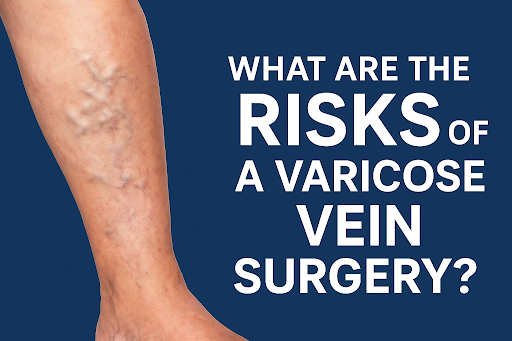Table of Contents
Introduction
Hip arthritis is a common and debilitating condition that affects millions of people worldwide. It occurs when the cartilage in the hip joint wears down over time, causing pain, stiffness, and reduced mobility. In this article, we will explore the causes, symptoms, treatment options, and prevention strategies for hip arthritis.
1. Understanding Hip Arthritis
1.1 What is Hip Arthritis?
Hip arthritis, also known as osteoarthritis of the hip, is a degenerative joint disease that primarily affects the hip joint. The hip joint is a ball-and-socket joint that allows for smooth movement of the leg. When the cartilage that cushions the bones in the hip joint wears away, the bones begin to rub against each other, leading to pain and discomfort.
1.2 Types of Hip Arthritis
There are two main types of hip arthritis: primary osteoarthritis and secondary osteoarthritis. Primary osteoarthritis is a result of aging and wear and tear on the joint over time. Secondary osteoarthritis, on the other hand, can be caused by various factors such as injuries, infections, or other underlying health conditions.
1.3 Risk Factors
Several risk factors can increase the likelihood of developing hip arthritis. These include age, family history, obesity, joint injuries, and certain occupations that involve repetitive hip movements.
2. Symptoms of Hip Arthritis
2.1 Persistent Hip Pain
One of the most common symptoms of hip arthritis is persistent pain in the hip joint. The pain may range from mild discomfort to severe and can worsen with physical activity.
2.2 Stiffness and Reduced Range of Motion
Individuals with hip arthritis often experience stiffness in the hip joint, making it challenging to move the leg freely. This reduced range of motion can affect daily activities such as walking or bending.
2.3 Grating Sensation
Some people with hip arthritis may feel a grating or grinding sensation in the hip joint when moving. This sensation is caused by bones rubbing against each other due to the lack of sufficient cartilage.
2.4 Joint Tenderness and Inflammation
The affected hip joint may become tender and swollen, especially after prolonged periods of activity or immobility.
3. Diagnosing Hip Arthritis
3.1 Medical History and Physical Examination
To diagnose hip arthritis, a medical professional will begin by taking a detailed medical history and performing a physical examination. They will look for signs of pain, inflammation, and limited mobility.
3.2 Imaging Tests
Imaging tests such as X-rays, magnetic resonance imaging (MRI), or computed tomography (CT) scans may be ordered to visualize the hip joint’s condition and rule out other possible causes of hip pain.
4. Treatment Options
4.1 Non-Surgical Treatments
In the early stages of hip arthritis, non-surgical treatments may help alleviate symptoms. These treatments include:
4.1.1 Lifestyle Modifications: Maintaining a healthy weight and engaging in low-impact exercises can reduce stress on the hip joint.
4.1.2 Physical Therapy: Targeted exercises can improve joint flexibility and strengthen the muscles around the hip joint.
4.1.3 Pain Medications: Over-the-counter pain relievers or prescription medications can help manage pain and inflammation.
4.1.4 Injection Therapies: Injection therapies for hip pain include steroid shots, radiofrequency ablation and platelet rich plasma (PRP).
4.2 Surgical Interventions
For severe cases of hip arthritis, surgical interventions may be necessary. Common surgical options include:
4.2.1 Hip Replacement Surgery: This procedure involves replacing the damaged hip joint with an artificial joint made of metal or plastic.
4.2.2 Hip Resurfacing: Suitable for younger patients, hip resurfacing involves capping the hip joint’s damaged surfaces with metal.
5. Preventing Hip Arthritis
5.1 Exercise Regularly
Engaging in regular low-impact exercises can help maintain joint flexibility and strengthen the muscles around the hip joint.
5.2 Maintain a Healthy Weight
Excess weight puts additional stress on the hip joint. Maintaining a healthy weight can reduce the risk of developing hip arthritis.
5.3 Protect Your Hips
Taking precautions to avoid hip injuries, such as using proper safety gear during sports activities, can help prevent hip arthritis.
FAQs
1. Can hip arthritis be reversed without surgery?
In the early stages, non-surgical treatments may help manage hip arthritis, but advanced cases may require surgical intervention.
2. What is the recovery period after hip replacement surgery?
The recovery period varies, but most people can resume light activities within six weeks and full activities within six months.
3. Can physical therapy cure hip arthritis?
Physical therapy can help manage symptoms and improve mobility, but it may not cure hip arthritis entirely.
4. Is hip arthritis a hereditary condition?
While genetics can play a role, hip arthritis is often a combination of genetic predisposition and lifestyle factors.
5. Can young adults develop hip arthritis?
Yes, young adults can develop hip arthritis, especially if they have experienced joint injuries or have certain risk factors.
Conclusion
Hip arthritis can significantly impact an individual’s quality of life, causing pain, stiffness, and reduced mobility. Understanding the causes, symptoms, treatment options, and prevention strategies is essential for managing this condition effectively. By adopting a proactive approach to hip health, individuals can reduce their risk of developing hip arthritis and enjoy an active lifestyle.








